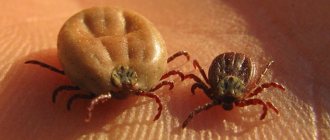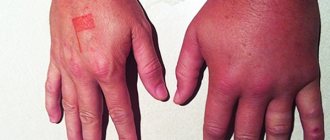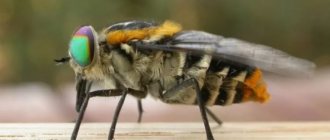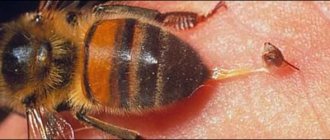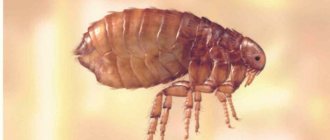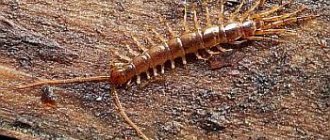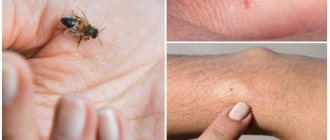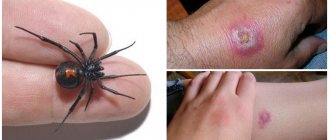How to protect your pet from ticks
Previously, the peak activity of ixodid ticks occurred in May and September.
Recently, cases of tick attacks have been reported from April to October. There have also been cases of ticks appearing in the cold season, when the ambient temperature rises above 1 degree. To ensure long-lasting protection, veterinarians recommend tick vaccinations for dogs. A two-component vaccine is produced and immunization is carried out against piroplasmosis (the most common disease transmitted by a tick bite). There is no vaccine for other infections.
See the review of anti-tick products for dogs>>>
Anti-tick remedy for dogs in the form of a vaccine, administered for the first time no later than 2 months before the start of tick activity. Revaccination is carried out 1-1.5 after the first injection. To prevent infection from a tick bite, revaccination is recommended every six months.
The modern pharmacological market of veterinary drugs provides a large number of different anti-tick remedies. These can be various sprays, tablets, drops in the withers and collars. In addition to protecting against ticks, the products help prevent the animal from becoming infected with fleas and lice-eaters. For example, drops against fleas and ticks in dogs help create protection for a whole month. At the same time, the active substance of the insectoacaricide circulates in the blood, preventing parasites from injecting infected saliva under the skin.
Treatment against ticks can be carried out using various means, which are divided into categories:
- The first ones do not repel, but destroy parasites only after they have attached and started sucking blood (drops in the withers against ticks for dogs).
- The second are repellents that do not destroy, but scare away parasites from the animal. The overwhelming majority are collars soaked in plant extracts and essential oils.
- Still others are universal, having repellent properties and capable of destroying parasites.
It is important to note that protecting your dog from ticks with folk remedies will not have a long-lasting effect. Various infusions and decoctions are not able to remain on the skin and circulate in the blood, providing protection against parasites
A veterinarian will help you choose a tick protection product. The action of all insectoacaricides does not begin immediately. As a rule, in order for shampoo, spray or drops into the withers to begin to take effect, at least 5 days must pass.
If the owner is planning a trip to the forest with a pet, it is recommended to carry out combined protection using an anti-tick spray for dogs and a collar. You can replace the spray with drops at the withers, but also secure the result with a high-quality flea and tick collar.
The best remedy for ticks are sprays and drops into the withers. Shampoos do not provide long-term effects. Drops in the withers against fleas and ticks are recommended for use on adult animals of all breeds.
It is not advisable to treat small puppies and bitches with drops during the period of gestation. Special sprays are suitable for these purposes.
By taking care of protecting the animal from tick and flea bites in advance, before the start of seasonal parasite activity, the owner will be able to protect his pet from various serious infections carried by bloodsuckers.
What to do if you are bitten by a tick
If a dog is bitten by a tick, it must be removed as quickly as possible. This can be done with tweezers, thread, syringe or special pharmacy tweezers. When an animal develops symptoms of the disease, it is necessary to begin treatment as quickly as possible. Self-medication is not advisable. It is best to contact a veterinary clinic for an accurate diagnosis.
The following injections are usually prescribed for dogs after a tick bite:
- Imizol;
- Babesan;
- Forticarb;
- Azidin.
Injections are administered intramuscularly, and in rare cases intravenously. The dosage is calculated depending on the weight of the dog. The drugs are very toxic and have a negative effect on the animal’s liver, kidneys and brain. As a result, it is also necessary to give your pet hepatoprotectors (for example, Essentiale) and detoxification agents (glucose, sodium chloride, Polyglucin). All these solutions are administered through droppers for 5-7 days, 2 pieces per day. If treatment is delayed, the disease can be fatal.
To protect your dog, you should get a tick vaccination 2 months after it has recovered. Even if she has already had piroplasmosis, immunity is not formed, and each infection is tolerated worse and worse. Vaccination will alleviate the condition of the animal in case of illness.
What to do if your dog is bitten by a tick
First of all, it is removed using surgical gloves, tweezers or a Tick Twister device.
If there are no tools at hand, the arthropod is carefully removed with your fingers.
Acceptable Actions
The tick is grabbed as close to the dog's epidermis as possible and slowly pulled out, holding the "patient's" skin with the other hand. Slight clockwise rotation is allowed. Upon completion of the manipulation, the wound is thickly lubricated with brilliant green, iodine or hydrogen peroxide.
Then all that remains is to observe the “operated” person (measuring his temperature daily), since the clinical picture of canine diseases becomes noticeable after weeks and even months. You should not delay going to the veterinary clinic if the dog has ceased to show interest in food and games, its temperature has risen, loose stools and unusually colored urine have appeared.
Prohibited actions
In order not to aggravate the situation, when removing the parasite, remember simple rules:
- do not fill it with vegetable oil - under the film the bloodsucker will begin to actively inject saliva under the skin;
- do not douse with kerosene/alcohol - the tick will not die and will not come off, and you will waste time;
- do not pick at the bite point, trying to pick up a parasite - this is a sure way to infection;
- Do not strangle the tick with a thread loop - this will more likely tear off its head than pull it out entirely.
If there are a lot of bites, take your pet to the veterinarian.
How to get rid of a parasite at home
Removing a tick is not difficult.
Here are the possible options for your actions if ixodid is detected on the body:
- Generously lubricate the parasite and the area where it bit with sunflower oil. The fur will adhere more tightly to the animal's skin and access to it will improve. At the same time, the parasite's access to oxygen will be blocked and it will be easier to pull it out.
- Pour alcohol or vodka over it. Here, the insect’s access to oxygen is also blocked, and, at the same time, the bite site is disinfected.
- Remove with special tweezers, which are sold in veterinary clinics.
- For smooth-haired breeds: take a disposable syringe (the diameter of the syringe should be larger than the diameter of the parasite). Cut the tip straight off the syringe barrel. Using the resulting new syringe, slowly pull it out. For long-haired breeds, this method is not effective, since air leaks into the syringe and the parasite is not sucked out.
- Make a loop from a strong thread and lasso the parasite. Twisting and slowly pulling out of the animal's body.
The entire tick should be removed! Then there is a chance that infection will not occur and the bite site will not become inflamed.
It is advisable to remove it with rubber gloves and burn it after removal.
It is best to remove the tick with special tweezers.
Therapy methods
First of all, it is necessary to limit all contacts with street dogs and carefully examine the dog’s skin and fur immediately after a walk on the street. If a parasite is noticed, you need to try to eliminate it yourself
It is important to promptly seek qualified help from a veterinarian
Pay attention to the symptoms - you should not allow the disease to reach an advanced stage, which can lead to death. There are preventive measures that can prevent bites:
- shampoos;
- drops;
- sprays;
- pills;
- acaricidal type collars.
The most effective method is vaccination
It is especially important to provide protection during the spring and summer seasons. But remember that none of the above remedies is a guarantee that the insect will not attach itself to the dog
The most dangerous species for animal health are:
- subcutaneous – deeply absorbed under the skin, causing the development of demodicosis and anemia;
- piroplasmosis - a dangerous variety that carries bloodstream disease, causing serious problems with the liver and kidneys. Piroplasmosis and renal failure may occur;
- sarcoptoid - the second name is “scabies”, which causes severe itching and discomfort. It moves under fabrics, leaving a deep mark - white holes.
Ticks can wait for your dog in foliage, grass, bushes and tree branches. In addition to unpleasant sensations, the dog’s sleep is completely disturbed, appetite disappears, and body temperature changes (possibly increasing to 40 degrees). Severe allergies and rapid development of infectious and bacterial diseases may occur. The degree of complication may vary, depending on the advanced stage. Insects select the most difficult places to reach. Veterinarians advise examining your pet every day, bathing it with special shampoos and putting on a collar.
Why are ticks dangerous?
The arachnid parasite lives in grass and bushes, so most often you can “pick up” it in forest and park areas. Ticks can be carried in hand luggage or on clothes by people returning from their summer cottage or outdoor recreation. For this reason, there is always a danger of becoming infected with a tick on public transport.
Ticks are parasites and carry various pathogenic microorganisms that can cause various infectious diseases. Moreover, they pose a danger not only to the pet, but also to the animal owners.
The bite as such does not pose a threat. The danger is that, along with saliva, an infection or parasites can enter the dog’s blood. The most common serious disease from which a pet can even die is piroplasmosis. Encephalitis, borreliosis, and ehrlichiosis are less common in dogs. There are ticks that are carriers of plague, brucellosis and other dangerous diseases.
Parasites multiply rapidly, destroy blood cells and disrupt processes in the body. In the case of piroplasmosis, the cardiovascular system, respiratory system, and kidneys may be affected. If a tick bite on a dog is not treated in a timely manner, blood vessels may become blocked and blood clots may form.
An anti-parasitic collar can protect your pet as a preventative measure, but there is one condition: it should not be used on pregnant or lactating dogs, or on puppies under 2 months of age.
Treatment of animal fur with acaricidal drops or sprays is carried out 2–3 days before leaving for nature. However, manufacturers do not provide a 100% guarantee of protection. Another method of prevention is vaccination.
Consequences of a tick bite for humans
If you are bitten by a tick, you must consult a doctor, since about 20% of ticks carry one infection, while from 7 to 15% carry a whole set. If on the 2-3rd day the victim’s temperature rises, this is a clear sign of an infection in the body.
Tick-borne encephalitis - fever begins 2-4 days after the bite. Weakness, nausea, and sometimes vomiting are observed. The main danger of encephalitis is damage to the brain, which causes brain swelling, hyperemia, and damage to the central nervous system. In severe forms, epileptic seizures, damage to consciousness, poliomyelitis syndrome are possible, and paralysis and paresis can also develop. Encephalitis is transmitted by ixodid ticks. You can also become infected through the milk of goats infected with ticks.
Monocytic erychiosis - 7 days after the bite, a fever begins, lasting up to three weeks.
Granulocytic anaplasmosis - the incubation period lasts from three days to three weeks. The symptoms are similar to the flu, which makes diagnosis difficult at first. Subsequently, a rash appears on the body, the pressure drops. Most patients suffer from liver damage. It is also possible to develop meningoencephalitis with severe kidney damage, even death.
Allergic reactions vary in nature, from itching, rashes to difficulty breathing and spasms.
What diseases can ticks transmit to dogs?
Hepatozoonosis. Caused by protozoa of the genus Hepatozoon, which infect leukocytes, spreading throughout the animal's body. This is usually due to ingestion of a parasite. Often the disease does not make itself felt for several years while the immune system is normal. When immunity decreases, fever, joint and muscle pain, weakness, and eye discharge begin. Not dangerous for people.
Ehrlichiosis. They provoke rickettsiae - Ehrlichia. Settles in white blood cells: platelets, monocytes and granulocytes. There are rickettsiae that are dangerous to people. The disease came to Russia from Europe and the USA. A sign of all ehrlichiosis is an exhausting, growing fever.
Monocytic ehrlichiosis: weight loss, the animal urinates blood, the number of platelets and leukocytes decreases, weakness, hemorrhages on the cornea, mucous membranes, skin, nosebleeds, anemia, heavy breathing are observed.
Granulocytic ehrlichiosis: high fever, weakness, cramps, inflammation of the eyelids, joint pain, enlarged liver and spleen, protein in the urine, low albumin and platelets. After 2-3 weeks, the animal’s activity decreases and lethargy appears. Sometimes it develops in a latent form and leads to severe damage to the eyes, bone marrow, joints, liver and other organs.
Bartonellosis - red blood cells, macrophages and endothelial cells are affected by bacteria of the genus Bartonella. Some Bartonella are also dangerous for people. Symptoms: from prolonged carriage to sudden death without obvious signs. Clinic: high fever, inflammation of the joints, drowsiness, weight loss, weakness of the hind legs, anemia, disturbances in the functioning of the heart and blood vessels, inflammation of the eyelids, nosebleeds, hemorrhages in the eyes, inflammation of the subcutaneous vessels, meningitis, pulmonary edema.
Borreliosis (Lyme disease) is a dangerous disease for dogs and people caused by bacteria of the genus Borrelia. It is transmitted in utero and often leads to the death or non-viability of the cubs. Causes arthritis and neurological disorders. First, the joints near the bite site become inflamed. Sometimes lameness goes away on its own. Hosts become infected with borreliosis by crushing a tick. The consequences of the disease are neurological disorders, chronic inflammation of joints, blood vessels, internal organs, etc.
Babesiosis (pyroplasmosis) is the most common disease in dogs. Not dangerous for people. Caused by different types of Babesia. Symptoms: lethargy after a bite, jaundice, fever, shortness of breath, gastrointestinal disorders, disorders in the liver, heart, lungs, kidneys and other organs. Dark: Brownish or red urine indicates kidney failure. The animal refuses food and drinks a lot of water.
For what diseases are injections performed?
Canine bloodsuckers carry pathogens of several infectious diseases.
- Piroplasmosis, or babesiosis. Symptoms appear 2-21 days after infection. The animal becomes lethargic and refuses food. His temperature is elevated - this is determined by a dry and hot nose. The infection affects the liver, kidneys and brain. Without treatment, piroplasmosis in dogs is fatal.
- Bartonellosis. After a tick bite, a dog has no symptoms of this disease for years, and then the animal suddenly dies. Bartonellosis manifests itself as bleeding from the gums, weakness of the paws, and inflammation of the eyes.
- Borreliosis. Signs after a borreliosis tick bite in a dog are associated with damage to the nervous system. There is a disturbance in gait and a change in behavior.
- Ehrlichiosis. Causes the dog to have a high fever. The animal is lethargic and refuses to eat or drink. Against the background of high temperature, the function of the liver and kidneys is impaired.
Therapeutic injections for a dog after a tick bite are given only in a veterinary clinic. You need to go there if your dog has become lethargic and has a hot and dry nose. Infection is indicated by loose stools and vomiting.
dog fever
Understanding that a tick has bitten can sometimes be difficult. Animals have thick fur, and they themselves do not always feel the suction of an insect. But still, when bitten, the dog may yelp and begin to scratch the bitten area. The parasite is visible only when it has sucked blood and increased in size.
Effective prevention
You can get stable immunity for six months (a dangerous period for infection with piroplasmosis through a bite) by using the Nobivak Piro vaccine produced in the Netherlands.
More stable immunity, up to a year, is developed when using:
- "Pirodog" (France);
- "Eurikan pyro." (Merial, France).
It should be understood that after a tick bite, injections are given only if the disease manifests itself.
If the diagnosis is made, then use:
- dye-based antiprotozoal agents (Fatribanil, Berenil, Imizol, Imidocaarb) and broad-spectrum antibiotics (Doxycycline, Clindomycin, Azithromycin);
- supporting agents (Gamavit, Salmozan, Heptral, Hepatovet);
- infusion therapy drugs (glucose, sodium chloride);
- vitamin preparations (B1, B6, B12, C)
Stage 1 – Destruction of piroplasm. For this purpose, antiprotozoal agents are used:
- Veriben, Berenil, Azidine (active ingredient diminazine) are the least toxic. However, there is a possibility of an individual reaction with instant blocking and brain damage.
- Imizol, Imidocarb, Piro-stop (active ingredient imidocarb) are serious toxic poisonous substances.
Stage 2 – Alkalinization of urine
This stage is necessary to maintain normal kidney function. Sodium bicarbonate is injected intravenously, which prevents the formation of hemoglobin crystals in the urine, which can clog the channels in the kidneys. The dog must be given a soda solution to drink, prepared at the rate of 2 g of soda per 10 kg of the animal’s weight.
Crystals formed by the breakdown products of hemoglobin in urineStage 3 – Supportive treatment
Vitamins, diuretics, glucose, and medications to restore blood circulation can be used.
Can be applied:
- filtering blood outside the body
- transfusion
If your dog has piroplasmosis, you may need a blood transfusion.
There is no effective vaccination against piroplasmosis, but today there is a fairly wide selection of means to protect against ticks: sprays, collars and drops on the withers.
Simply applying a spray is not enough. Wearing rubber gloves, rub the product into the skin. If the spray remains on the fur, there will be no talk of any protection against ticks.
Spray treatment is carried out once every 3-4 weeks.
If you are planning a long stay of the dog in nature (in the forest, at the dacha, in the village), it would be advisable to put an insectoacaricidal collar on the animal 2-3 days before the trip. The Kiltix collar from Bayer (Germany) is quite reliable. The size of the collar should correspond to the height and weight of the dog.
When going to the country with your dog, you need to protect it with a tick collar
Vaccines Pirodog from Merial and Nobivak Piro from Intervet provide weak immunity but can protect a dog from death if infected with piroplasmosis.
Dog in a protective suit on a walk
Nowadays, there is no 100% protection against ticks, but you can try to protect your dog from ticks while walking.
- After all walks, be sure to examine the dog and carefully feel the fur.
- From the beginning of April, use special anti-tick products: sprays, collars, drops. They can reduce the chance of catching a tick by up to 50 percent.
- Before a long trip, carefully treat your pet's fur with protective products.
Vaccines and inoculations
The most effective vaccines against piroplasmosis are Pirodog and Nobivak Piro. They contain a special isolated piroplasmosis antigen.
Types of diseases
The most dangerous disease that a dog can contract from a parasite bite is piroplasmosis. Its causative agent is unicellular organisms piroplasma. They are present in the salivary gland of ticks, from where they enter the animal’s bloodstream through any wound. There are only 2 ways of transmitting them:
- tick bite;
- ingestion of the parasite.
The parasite itself is an arachnid bug, sometimes reaching a size of up to 10 mm. Tick habitat:
- places with high humidity;
- low trees and shrubs;
- meadow grass;
- field;
- city parks and flower beds.
Most often, the tick “attacks” the dog while walking in areas where there is a lot of unmown grass. Once the parasite attaches itself to the pet's body, its size barely reaches the head of a pin. Feeding on the blood of an animal, the tick “grows” to the size of a large bean.
The most dangerous types of ticks for dogs are:
- Subcutaneous or ixodic. They cause unpleasant illnesses, such as piroplasmosis, the treatment of which can take from several weeks to six months.
- Argaceae. Their sizes can vary from 3 mm to 3 cm, depending on whether the insect has had time to “eat.” Argas ticks are dangerous because they can transmit encephalitis, fever and plague.
Depending on the type of tick, dogs may develop the following diseases:
- Sarcoptic mange (pruritic scabies). Its causative agent is a round-shaped parasite. The carrier of this disease can be a person or another dog. Parasites multiply in the thickness of the dermis, causing rashes, deep scratching, and bald spots on the body.
- Otodectosis (ear scabies). Tiny in size, mites stick to the inside of the ears and canals. Their main sources of nutrition are blood, lymph and earwax. The main sign of such a “parasitic neighborhood” is the noticeable movement of small particles in the animal’s ears. These are waste products of small parasites mixed with dried blood and dead layers of skin. Such ticks are dangerous because they can damage the eardrum and cause meningitis.
- Cheyletiellosis or “stray dandruff”. This is the most harmless disease, which is manifested by an abundance of dandruff and dry skin. In severe cases, cheyletiellosis leads to complete baldness of the four-legged friend.
- Bartonellosis. Mites of the genus Bartonella infect red blood cells and endothelial cells. Some dogs can carry Bartonella for several years without visible signs of infection, while others have immediate symptoms. The disease is often accompanied by fever, anemia and rapid weight loss. Its consequences are quite serious: meningitis, cutaneous vasculitis, pulmonary edema, etc.
- Ehrlichiosis. Ehrlichia mites parasitize inside platelets and granulocytes. You can find out about the disease by conducting a blood test - if the platelet count is reduced and the protein content is increased, then there is a reason to treat ehrlichiosis. During this period, the dog practically does not react to the owner, its liver and spleen are noticeably enlarged, and the body is depleted.
- Hepatozoonosis. The causative agent of the disease in dogs is a tick of the genus Hepatozoon. The parasite is localized in the lymph nodes, most often entering the body by ingestion. The first symptoms will appear as soon as the immune system fails. This is why the incubation (hidden) period can drag on for several months.
- Borreliosis. Bacteria of the genus Borrelia provoke lameness, arthritis and the birth of non-viable offspring in an infected dog. After a bite, the disease manifests itself 2 weeks later in the form of fever, enlarged lymph nodes, apathy and inflammation in the joints or internal organs.
- Piroplasmosis. The most common type of disease transmitted by ixodid ticks. You can recognize the disease by the color of urine (brown, dark red), gastrointestinal upset, neurological changes and constant thirst in the animal. The incubation period of piroplasmosis varies from 5 to 10 days.
The blood-sucking parasite will not harm your pet if you remove it from the animal’s skin in time. An average of a week passes after the bite and before the first symptoms appear. Before burrowing, the tick can “travel” through the dog’s body for up to 5 hours. This time will be enough to examine the dog's entire body.
What consequences can there be for a dog from a parasite bite?
If the tick has sucked a little blood, then there is no danger to health. But some parasites suffer serious pathologies. Infection occurs in 4-14 percent of bites.
Borreliosis is a tick-borne disease caused by spirochetes. It is of a natural focal nature. A pet becomes ill after being bitten by a parasite - an adult or a nymph. They accumulate in the temperate climate zone. Usually there are no symptoms of the pathology; clinical signs are observed in 20 percent of dogs.
Hidden reproduction of organisms occurs, so borreliosis takes a chronic form. It manifests itself in the development of arthritis, changes in tissues, organs, joints, and lameness. The disease can be diagnosed at a veterinary clinic.
The causative agent of bartonellosis enters the bloodstream as a result of an attack by Rhipicephalus sanguineus. Pets living in the countryside, representatives of hunting breeds, and stray animals are often infected. The disease affects blood cells and its symptoms depend on the dog's immune system. Due to the inflammatory process, pulmonary edema, myocarditis, arrhythmia, and endocarditis develop. Therapy consists of taking antibiotics.
Piroplasmosis is caused by Babesia parasites. Infection occurs from ixodid ticks. Unicellular organisms feed on hemoglobin. As a result, blood cells are damaged and the body is poisoned. Without medical intervention, the dog dies five days after signs of pathology appear. The disease can occur in representatives of any breed and age group, but if the pet is more than four years old, it will be easier.
Incubation period – from two days to two weeks
After a parasite bite, you need to pay attention to the following symptoms:
- Temperature increases to 40 degrees and above.
- Excessive thirst.
- Yellowness of mucous membranes.
- Loss of appetite.
- Labored breathing.
- Lethargy.
- Change in urine color to dark brown.
If the owner does not pay attention to the signs of illness, he is wasting time. Reproduction occurs very quickly, which complicates its course. If the dog was sick and becomes infected again, piroplasmosis will become chronic. First, the temperature will increase to 41 degrees, then drop to normal. The pet refuses to eat, gets tired quickly, and anemia develops. The dog recovers slowly, from 1 to 3 months.
The disease is diagnosed using a blood test. Therapy should be comprehensive, aimed at reducing intoxication. Veriben is used to eliminate Babesia. Treatment is supplemented with vitamins and glucose.
The incubation period of ehrlichiosis is from 7 to 21 days. It often accompanies a previous illness. Ehrlichia leads to enlargement of the liver, lymph nodes, and spleen. Signs of acute form:
- Diarrhea.
- Vomit.
- Loss of appetite.
- Cough.
- Nasal discharge.
The latent form lasts up to three months, during which time the number of platelets in the blood decreases. There is a decrease in body weight, hemorrhages under the skin. Diagnosis of the pathology is difficult.
Hepatozoonosis is a parasitic disease. The single-celled organism remains in the blood cells. The disease is not very common, so it is difficult to identify. The incubation period is long, there are few parasites. The pathology is expressed in the form of liver inflammation, enlarged lymph nodes, and anemia.
After a parasite bite, a pet may experience a neurotoxic reaction. It appears due to toxic substances leading to allergies. The hind legs become immobilized. Recovery occurs without medical intervention after two days. Sometimes observed
difficulty swallowing, loss of voice. A red spot, rash or swelling forms on the pet's body. To reduce the toxic effects, an antihistamine is prescribed.
If a pregnant dog is bitten by a tick, the situation becomes even more complicated. The listed pathologies lead to miscarriages, fetal death or premature birth. Vaccinations during this period are also prohibited, as they negatively affect the offspring. Therefore, during peak activity, it is better not to walk with the animal in nature.
Signs of a dog being bitten by ticks
When a tick infects a dog with any disease, it goes through the same stages of rooting in the body as in the case of a person. This is called the incubation period. In dogs it is shorter than in humans, most often lasting from 12 hours to 14 days. That is, acute symptoms can appear almost on the day of the bite. Therefore, if you remove a tick from a dog, do not wait until the pet becomes ill. Take him to the veterinary clinic immediately. There you should be asked to do a series of tests on the dog, based on the results of which a diagnosis will be made and appropriate treatment will be prescribed. Signs of a dog tick bite should not be ignored, otherwise your pet will most likely die. Recovery without medical intervention occurs in only 2% of cases, which is extremely small in relation to the total number of those who applied. In severe stages, recovery with drug treatment occurs in 75% of cases. This is a good indicator in digital equivalent, but you should never forget that there remains a second part - another 25% of sad statistics, which also includes someone’s favorites.
For a dog’s body, not only the disease itself is difficult, but also the treatment. The virus and medications primarily attack the blood vessels, heart, kidneys, liver, central nervous system and brain. If the dog has problems with any organs, they will definitely worsen during the treatment period. That is why an experienced, competent doctor is needed to eliminate the disease and restore the body. It's better to find it in advance. If you are attentive to your pet and help him at the right time, then such a nuisance as a tick bite will pass for the dog with minimal losses.
Treatment for bites is carried out in two directions:
- Destruction of the causative agent of piroplasmosis
To destroy the causative agent of the disease, drugs from the group of organic dyes (berenyl, azidine, veriben) and imidocarb derivatives (Piro-Stop) are used.
A common property of these drugs is their toxicity not only to the pathogen, but also to the patient. Since the drugs do not have a preventive effect, they are used only after a diagnosis has been established, under the supervision of a veterinarian!
Removing intoxication and maintaining the general condition of the animal’s body
To relieve intoxication and maintain the body, a large number of medications are used: saline solutions, vitamins, cardiac medications, etc.
The volume and duration of treatment depends on the patient's condition. In any case, the recovery period lasts at least one month and requires follow-up tests.
Prevention, protective equipment and precautions. Prevention of piroplasmosis consists in preventing an attack on the animal; for this they are treated with acaricidal drugs, which are available in the form of collars (Kiltiks, Bolfo, Hartz), sprays (Frontline, Defendog, Bars) and drops on the withers (“Advantix”, “Frontline”, “Hartz”, “Bars”, “Serco”)
Prevention of piroplasmosis consists in preventing an attack on the animal; for this they are treated with acaricidal drugs, which are available in the form of collars (Kiltiks, Bolfo, Hartz), sprays (Frontline, Defendog, Bars) and drops on the withers (“Advantix”, “Frontline”, “Hartz”, “Bars”, “Serco”).
These products are distributed over the skin and hair without being absorbed into the blood. Upon contact with treated hair and skin, it dies. These products, unfortunately, do not provide 100% protection against parasites; the effectiveness of these drugs depends on how much time has passed since their application. Protective equipment must be used in advance (2-3 days before going out into nature or going on vacation).
normal look
A tick that has drunk blood from a domestic dog
When purchasing protective equipment in veterinary pharmacies or pet stores, be sure to pay attention to the expiration date, integrity of the packaging, and instructions in Russian. Be sure to read the instructions! It is necessary to remember that:
It must be remembered that:
- When using anti-mite drugs, contact allergies are possible.
- When using the spray, it is necessary to treat not only the animal’s body, but also the paws and head, and especially carefully the groin area, armpits and behind the ears.
- If the dog has long hair, then the spray consumption increases up to 2 times.
- If your dog bathes frequently (or you wash it), then the frequency of anti-tick treatments needs to be increased.
- The packing of drops at the withers must strictly correspond to the weight of your pet.
Very often, owners come to the veterinary clinic with a request to vaccinate their dogs against piroplasmosis. Currently, in order to form an immune response in dogs, it is used against the causative agent of babesiosis.
Vaccine Pirodog
Even though you take precautions, keep a close eye on your dog and check it regularly. If signs of illness occur, contact your veterinarian
Remember, self-medication can cause irreparable harm to the health and life of your pet!
If you find similar symptoms in your dog, do not experiment! It is necessary to urgently contact a veterinary clinic; if for some reason this is not possible, use the service of calling a veterinarian at home.
What are injections for?
If you find a tick attached to your dog, you must remove it immediately. It is best to contact a veterinary clinic. If this is not possible, the insect is removed independently. The procedure should be performed with gloves.
The tick is grabbed with tweezers as close to the skin of the bitten dog as possible. Using rotating movements, remove the insect from the wound. It is important not to crush the parasite, as bacteria will be transferred to the dog with its blood. The insect is not destroyed, but taken to the laboratory for research.
First aid for a dog with a tick bite involves thoroughly treating the wound. To do this, use an antiseptic - Chlorhexidine, Miramistin, brilliant green. The fur around a tick bite on your dog's skin can be trimmed. This will allow you to notice inflammation in time.
Next, monitor the puppy for a week. If there are no symptoms of the disease, then the insect was not infected. If you notice unusual animal behavior, it is recommended to contact a veterinary clinic. There the dog will be examined and the consequences of the bite will be determined.
To protect against the most common disease spread by arachnids - piroplasmosis - there are two vaccines. They are called Pirodog and Nobivak. The vaccine creates immunity; in case of infection, the disease will be mild. Vaccinations are done once a year. Two injections are required, 14 days apart.
Pirodog
If a dog is bitten by a tick and signs of illness appear, treatment at home is unacceptable. The dog needs a long course of therapy, including several droppers. You won't be able to make them yourself.
